2021 “Next Gen” will bring NASCAR’s first-ever independent rear suspension, sequential gearbox
While most racing series have transitioned to sequential or dual-clutch gearboxes, NASCAR has kept its tried-and-true four-speed manual H-pattern gearbox. Using this type of gearbox does make sense for many of the tracks that NASCAR visits, but the series is now exploring new options to keep better pace with other racing series around the world.
Details such as the change from 15-inch to 18-inch wheels have leaked out, but NASCAR is remaining tight-lipped for now. “Though we have made an incredible amount of progress on the Next Gen car,” spokesperson Josh Hamilton told us, “there are many specifics around the parts and pieces of the vehicle that we will provide more details about at the appropriate time. We know fans are eager for information, and we look forward to providing that when the time is right.”
In the meantime, we did some digging—and discovered that the Next Gen race car represents several firsts in the history of NASCAR.
Luckily, some of the vendors that NASCAR has tapped for the Next Gen car were around at the 2019 Performance Racing Industry (PRI) Trade Show in Indianapolis last week. A few of their representatives were willing to chat and share a few more details about the car’s transmission, and from that we pieced together details of the car’s front and rear suspension setup. (Hint—say goodbye to solid rear axles.)
First, for some background. Our first view of the new car came at Richmond Raceway back in October when Austin Dillon tested it and shared a few pictures of the car. Based on those pictures, it was readily apparent that the wheels were indeed bigger, as NASCAR had announced, and that some aerodynamic tweaks had been made: a stepped splitter on the front end of the car, a new design for the side skirts, and the addition of a large rear diffuser.
The second test was completed more recently, and we got a much better view of the car since NASCAR stripped off the camouflage and released a bunch of pictures of it. Joey Logano was the one running the car in that second test at ISM Raceway, and he shared some footage on Instagram that gave us our first view of the car’s interior.

As soon as the video pans to the inside of the car, it’s apparent that the traditional H-pattern shifter is gone, replaced instead by a tap shifter used for a sequential gearbox. The shifter can be tapped forward and back in order to change gears and it has a lockout handle on the front that, when engaged, allows the driver to shift into reverse. We can also see the linkage leading from the shifter going towards the back of the car.
We can conclude just from the tap shifter and the linkage that NASCAR is testing a sequential gearbox. Because of the way the shifter linkage is mounted, we can also deduce that the sequential gearbox is most likely packaged as a transaxle in the back of the car.
We took this information and spoke with a variety of engineers and technicians who work for suppliers that produce sequential gearboxes. Though these representatives wanted to remain anonymous, they did confirm that this new car is running a rear-mounted six-speed sequential transaxle.
While multiple vendors were in the running to supply the new unit, options from vendors such as Albins and some local shops in North Carolina no longer appear to be in consideration. We heard from vendors that Xtrac will likely be the chosen supplier, and that a unit from Xtrac is currently being tested in the 2021 car.
At least one Xtrac engineer can be spotted walking near the Next Gen car in Logano’s Instagram video, so that’s not a huge surprise. According to an engineer we spoke with at the show, the gearbox combination currently in the car is a variant of Xtrac’s P1293 transaxle, which is also the control gearbox for the Australian Supercars Championship.
Luckily, Xtrac had an example of this transaxle on display at PRI, so we took a closer look. This transaxle unit is very compact and weighs less than 140 pounds in its standard configuration. In the Supercars configuration, it offers sequential selection of six gears and supports up to 495 pound-feet of torque. This rating is probably based on the maximum torque produced by the Supercars engines and likely has a built-in margin of safety. Since current NASCAR engines produce somewhere between 450–500 lb-ft of torque, this gearbox should be a good fit. We’ve already seen that it can handle some abuse, since Logano launched the car and did some healthy burnouts at the test in Arizona.
The Xtrac P1293 transaxle uses an aluminum case that contains a cassette-type gear cluster, spiral bevel gear final drive, and tripode output flanges. It comes with a fixed-axle, spool-type differential but can also be configured with plate-type limited-slip differential that allows for pre-load adjustment. This transaxle also offers a quick change input drop gear set with a variety of available ratios.
According to multiple sources that wished to remain anonymous, NASCAR is testing the P1293 transaxle in the Next Gen car with only minimal modifications from its Supercars configuration. They are mainly changing gear ratios and adapting it for the platform.

Moving to a transaxle means that the whole arrangement of the car will change, since the current car relies on a solid rear axle and corresponding suspension design. NASCAR will be moving from a solid-axle rear suspension to an independent rear suspension for the first time in history. This is supported by some of the pictures released by NASCAR which show significant negative camber in the rear that could not be possible even with the adjustable “floater” rear axles NASCAR currently uses.
Complementing that new independent rear suspension will be a whole new damper arrangement. It is reasonable to assume that the rear will now have a coilover-type damper due to the new suspension; and according to one of our sources, the front is also going to transition to a coilover-type configuration. This coilover setup will replace the current “spring-in-bucket” design that has been in use, in one form or another, since the 1960s.
While the 2021 car will mark a significant departure for NASCAR, its technology hasn’t necessarily been stuck in the dark ages to this point. Though many of the components used in the 2019 season cars have been in use for decades, NASCAR shares its development approach and, occasionally, some personnel with Formula 1. One example is the engine control unit. While NASCAR’s pushrod V-8 traces its ancestry to ’60s engines, the control unit for that engine (a McLaren TAG-400N) shares an architecture with the TAG-320B unit used in Formula 1. In addition, NASCAR and Formula 1 follow similar development paths; engineers in both series make extensive use of computer simulation, most notably in aerodynamics. So while the 2019 NASCAR race car’s rear differentials might have started out in the ’60s, the gears have been reshaped over time, and even the covers and cases for the differentials have been optimized for aerodynamic efficiency.
The development process favors the larger teams that can afford to hire top-level, F1-experienced engineers, so the Next Gen car’s completely new suspension formula will even the playing field, at least for a short period of time. The gearbox and suspension changes will also provide a new challenge to engineers who, within the boundaries of the NASCAR rulebook, have made only incremental changes to the cars in recent years.
Another benefit of having more gears is cost reduction. Since the current four-speed gearbox has a 1:1 ratio in fourth gear, and rpm is controlled by changing that rear-end ratio, teams must stock a wide variety of ratios. With the addition of two extra gears, the number of alternate rear-ends should be drastically reduced.

One final change is hiding in plain sight. As shown in pictures released by NASCAR, the tires are going to be wider. NASCAR currently uses a 28/10-15 Goodyear tire, but one of the photos shared by NASCAR shows a sticker on one of the “Goodyear Racing Special” test tires with a listed size of 365/35R18. This means that the tire is 365 millimeters (14.3 inches) wide, which converts to an increase of 4.3 inches over the current tire.
Combined, all of these changes will produce a car that is wildly different than anything we have seen before in NASCAR. Components like the independent rear suspension and 18-inch wheels will bring the race cars closer to their road-going counterparts, while the sequential transaxle will keep them up to date with cars in other racing series. We look forward to more tests and more opportunities to see how the car develops and take NASCAR into the next phase of its storied history.
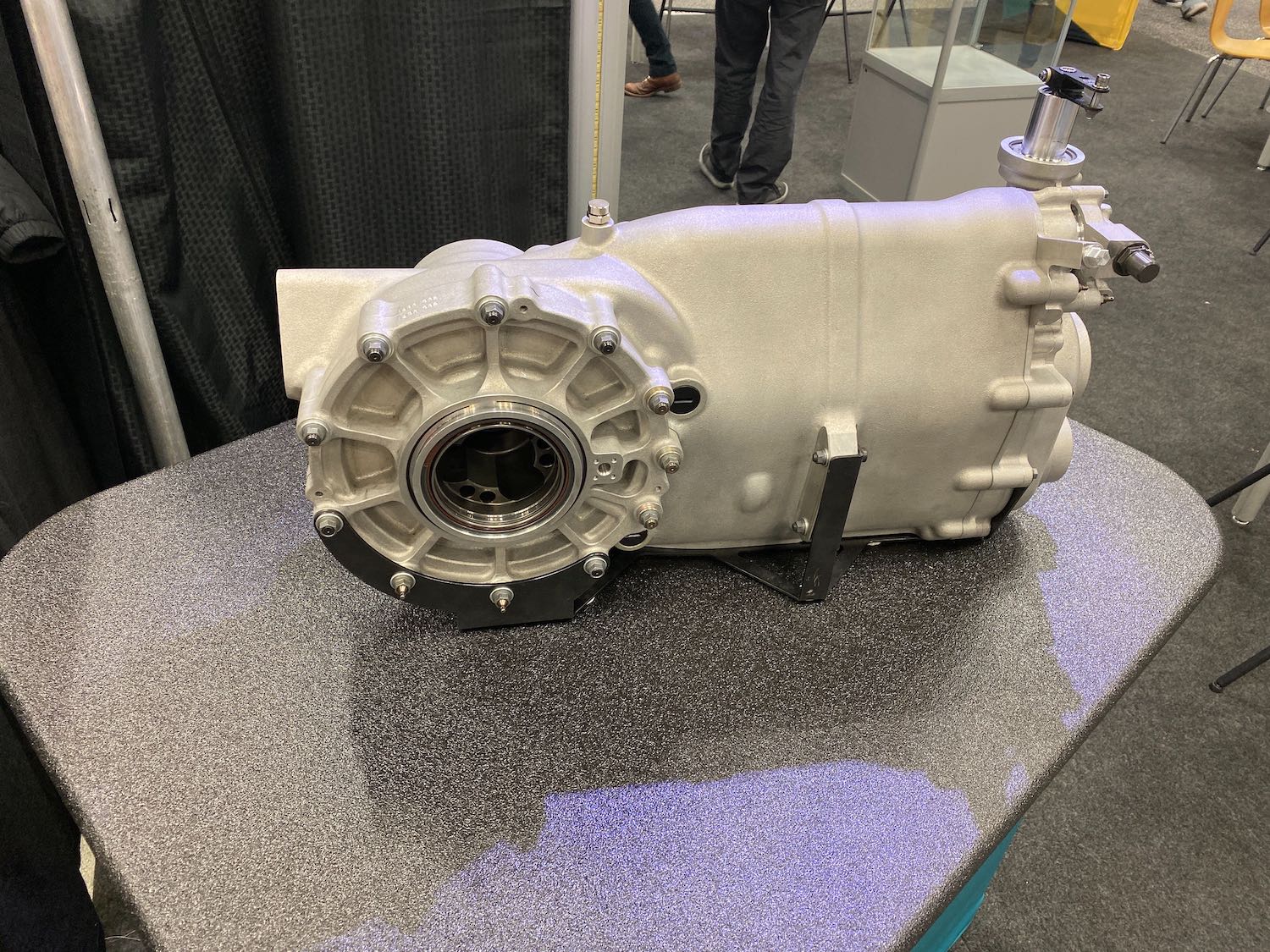
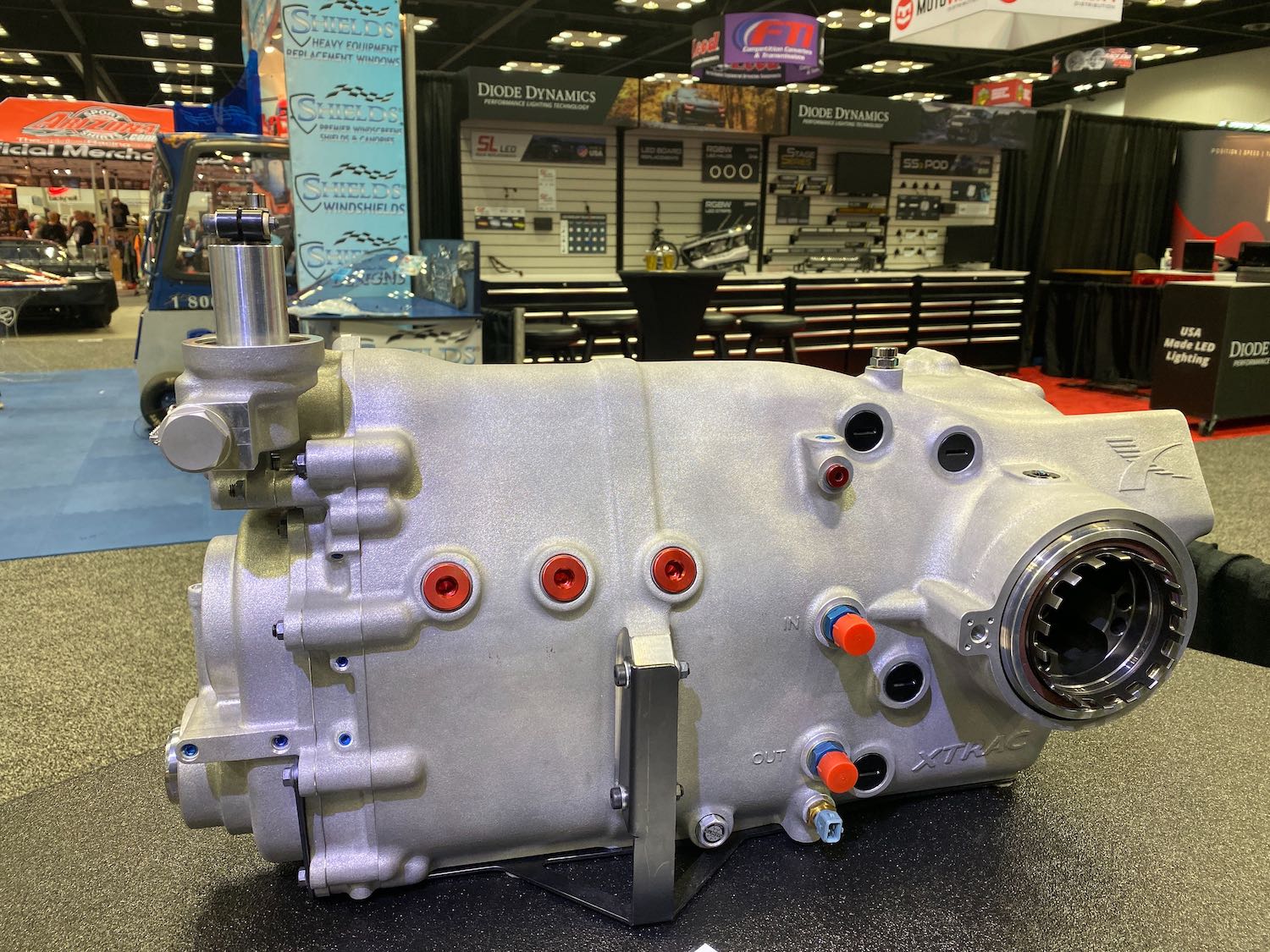

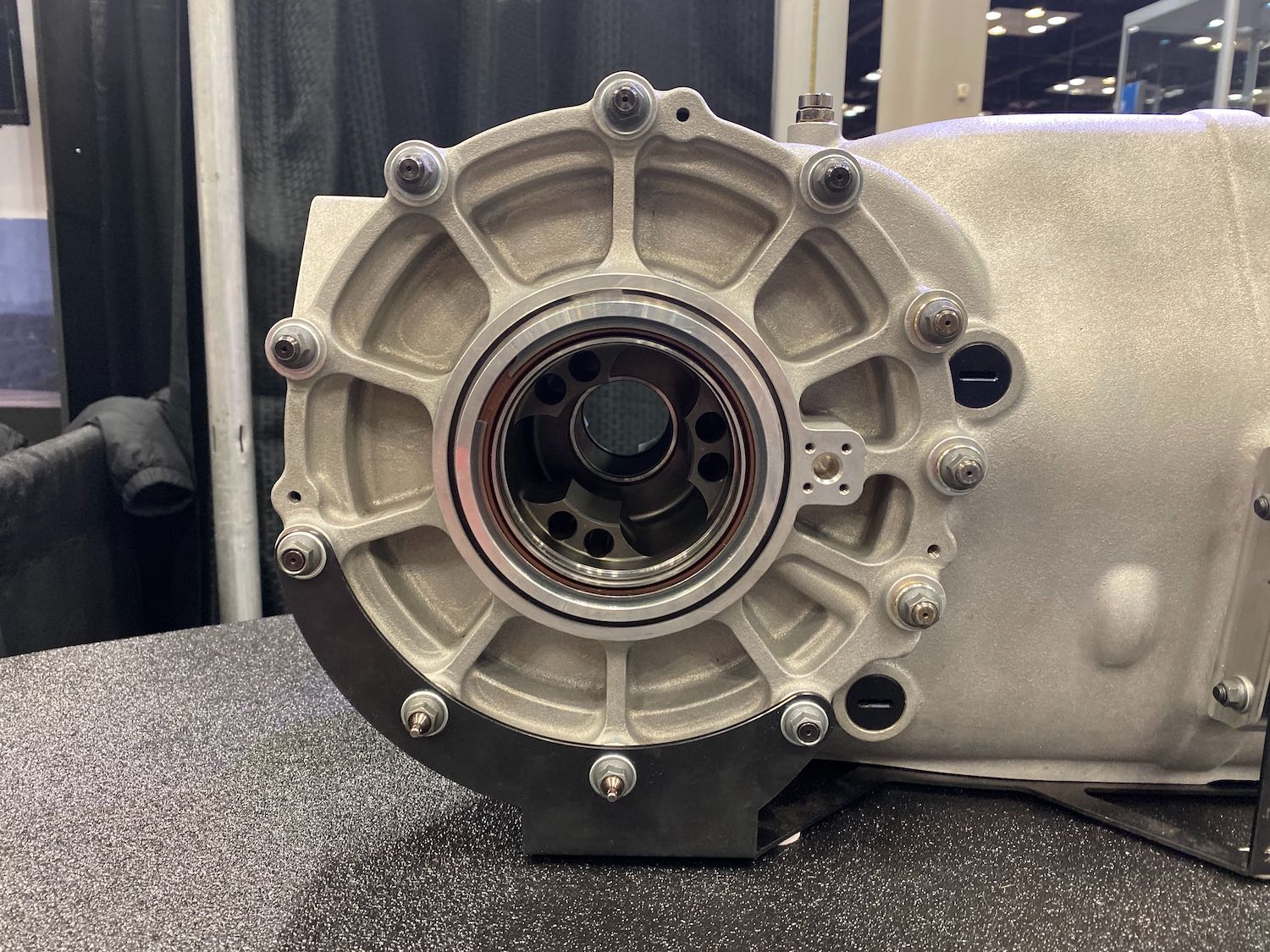
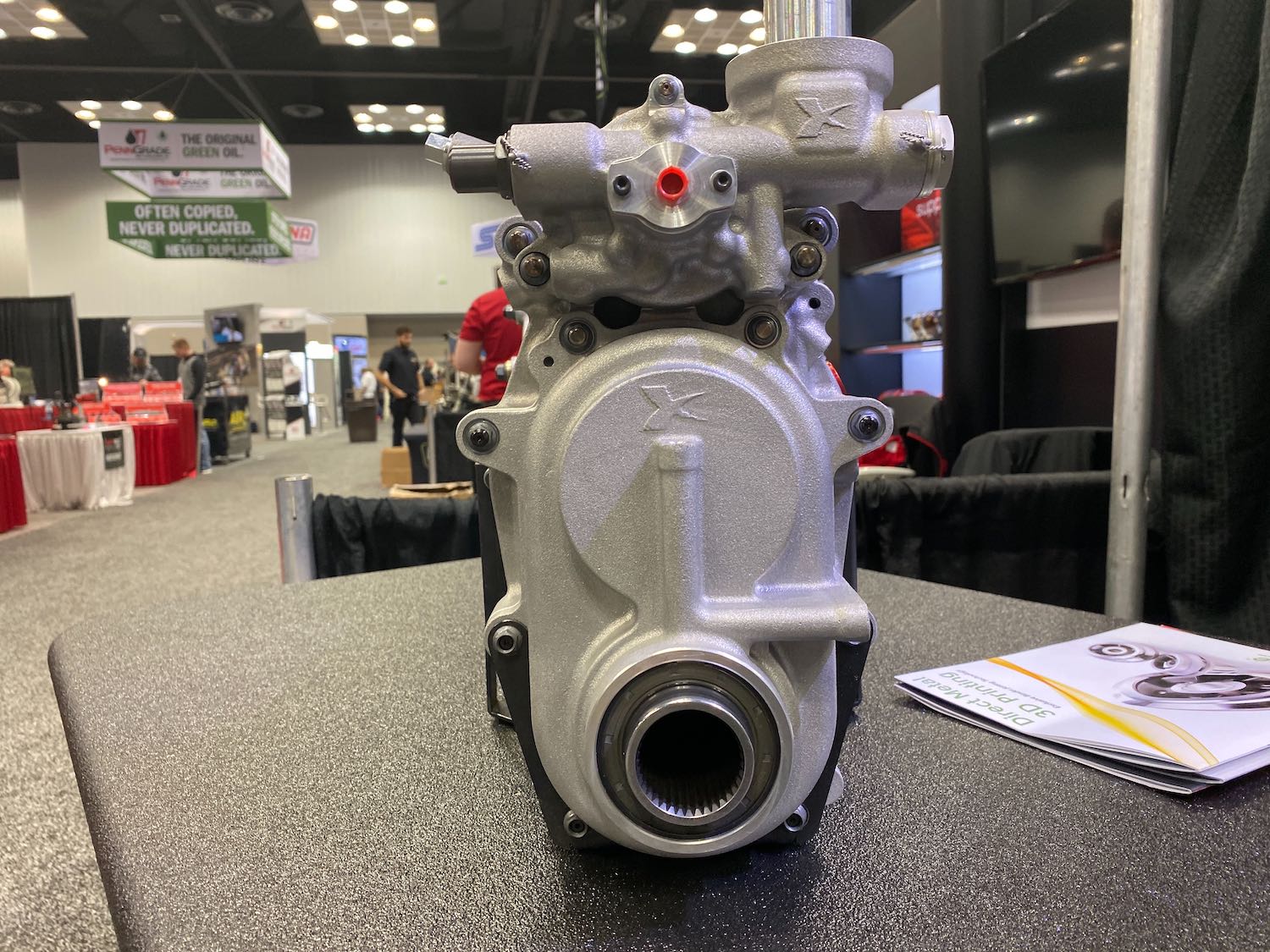
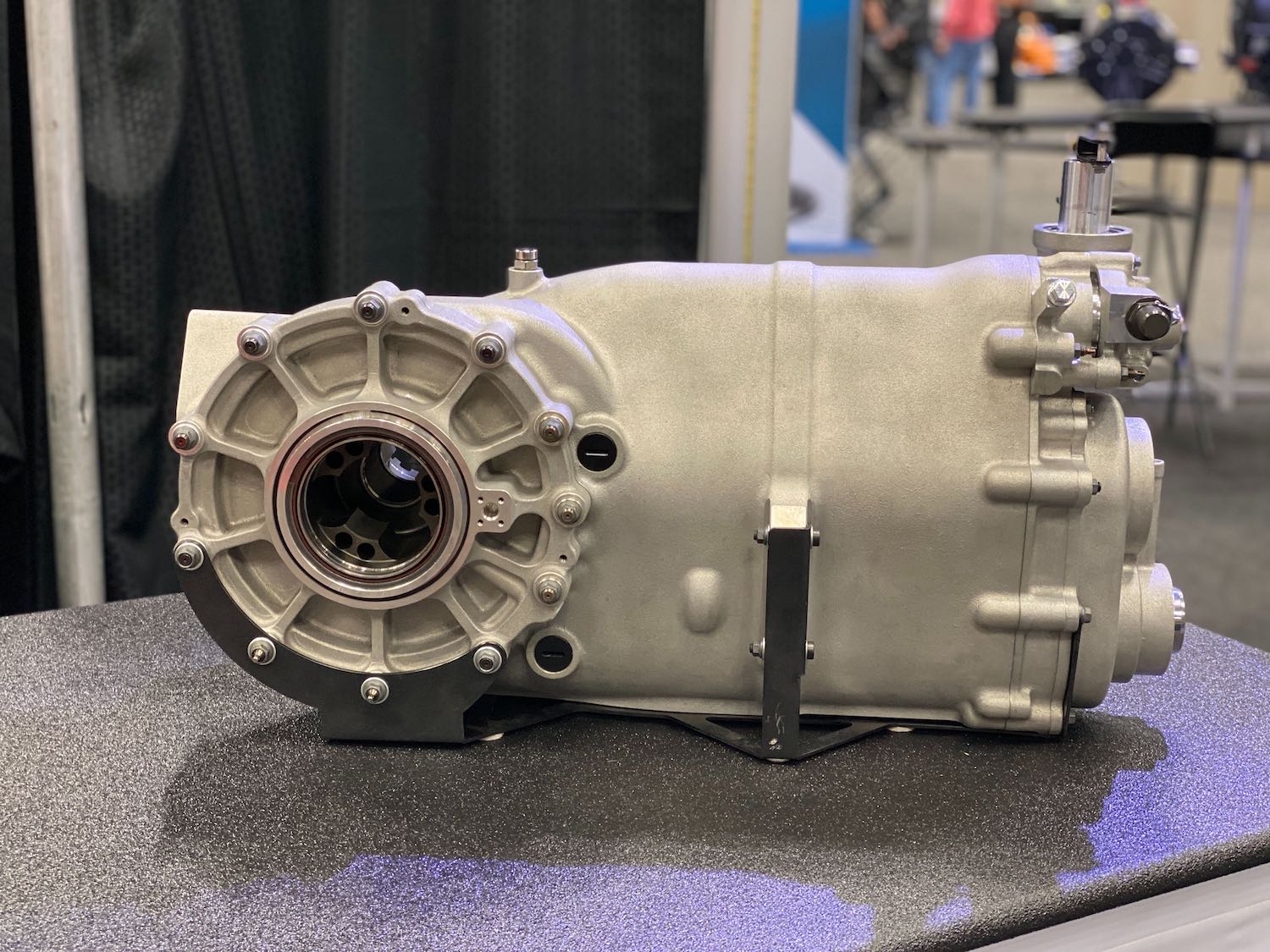

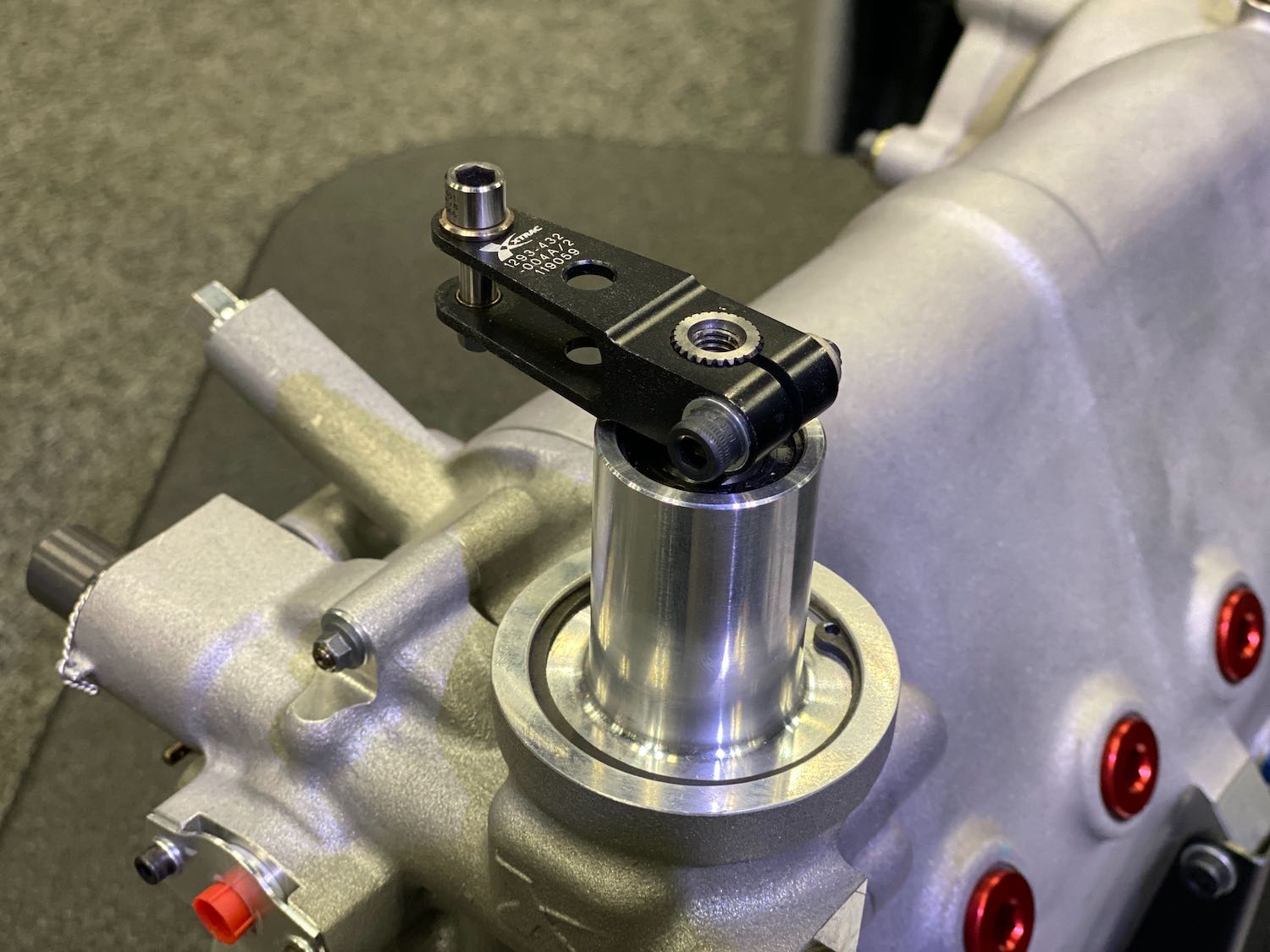
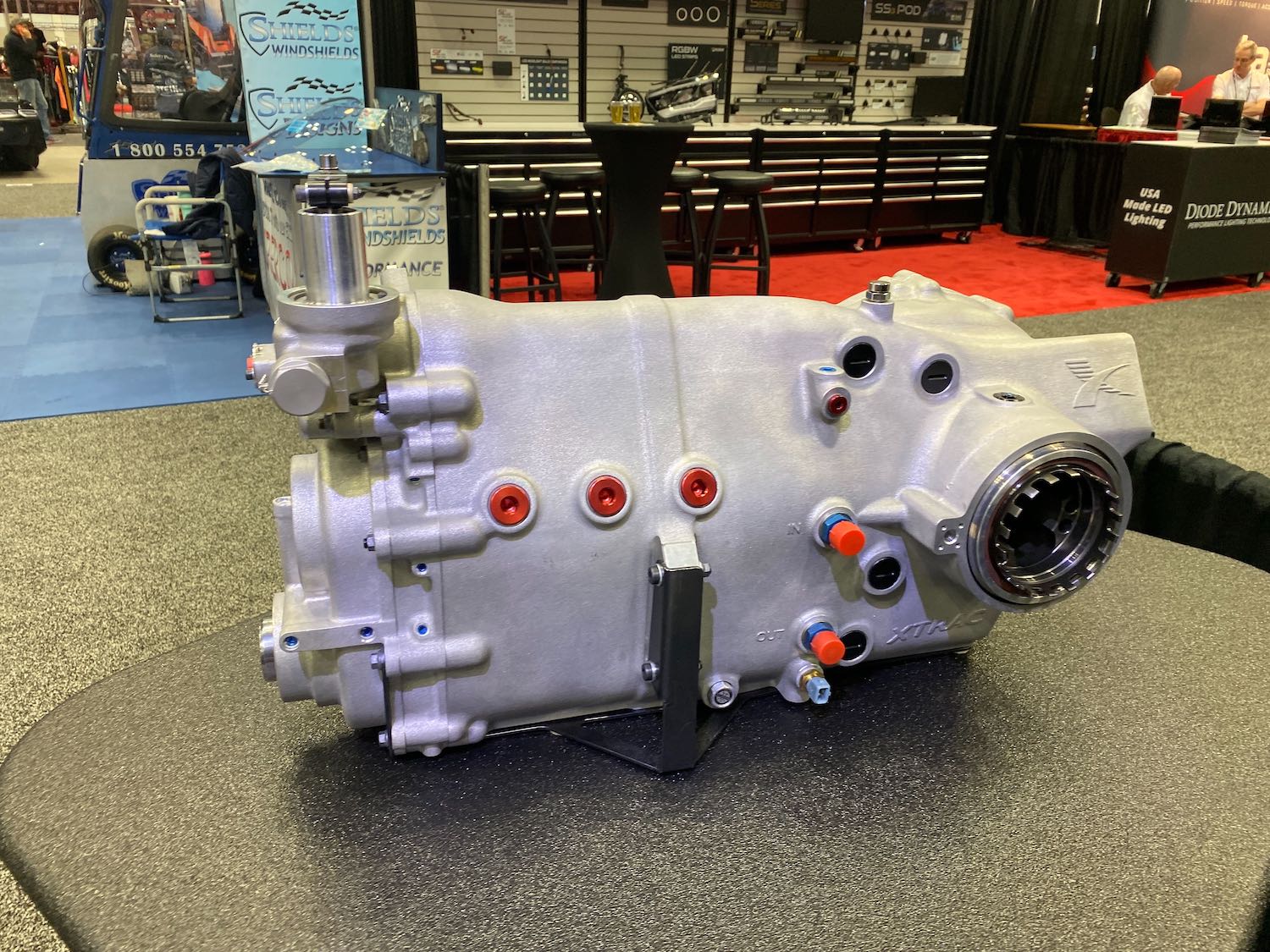

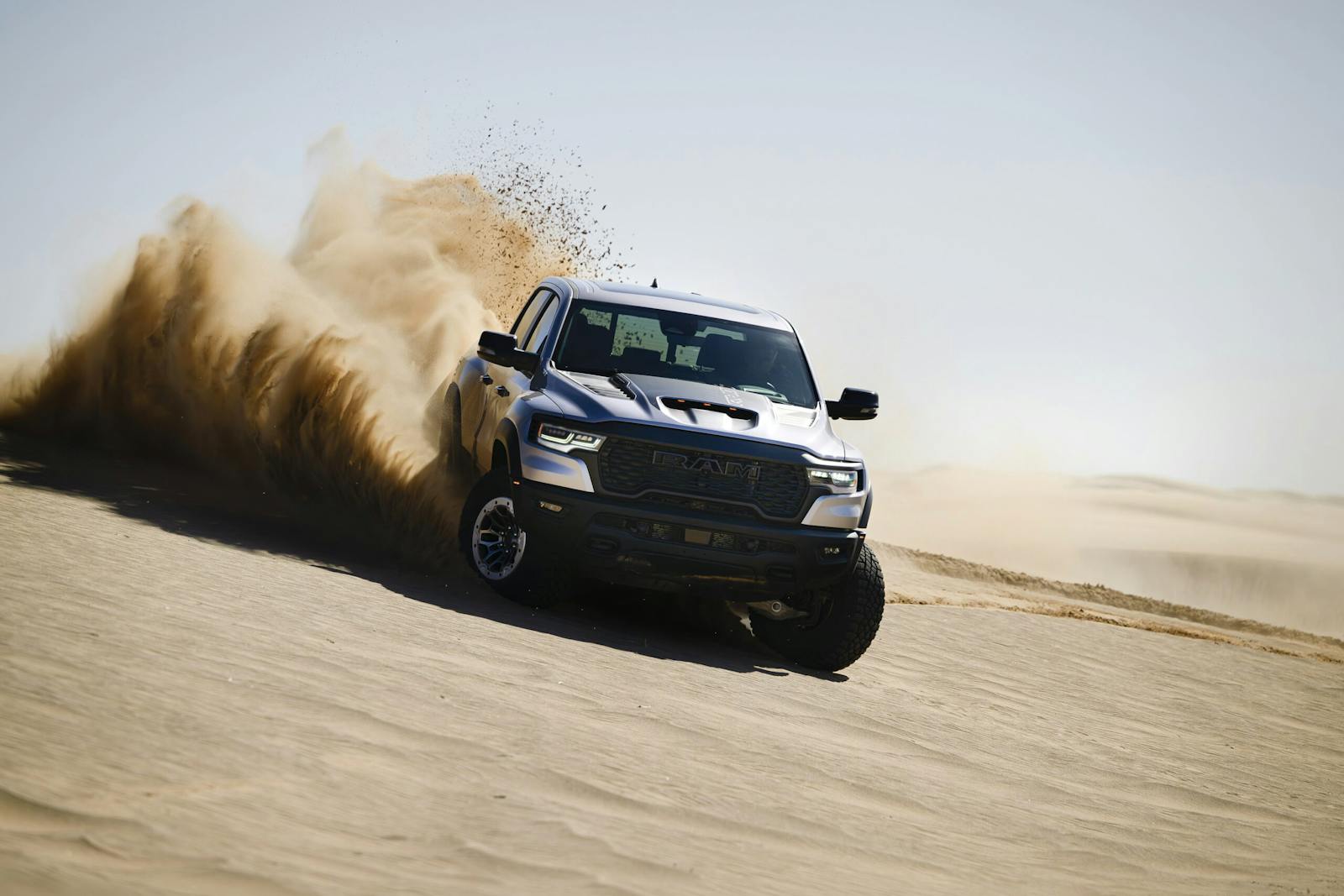

I like it, but this provokes several questions. First, I assume that the differential mounts on that circular flange on the left (?) side of the transaxle, and the two (2) output half shafts slide into the splined holes on both sides of the transaxle, correct? Next where is the wet multi-plate clutch mounted, on the transmission input shaft, or is it bolted to the flywheel at the engine crankshaft? If the clutch is mounted remotely, at the flywheel, how is the clutch actuated, and how is the clutch state (in or out) communicated from clutch to the gearbox to complete the shift? Finally, and perhaps most importantly to me, is there any chance that Ford would offer a Mustang with this bad boy of a gearbox as an option on the next Mustang? Inquiring minds want to know!